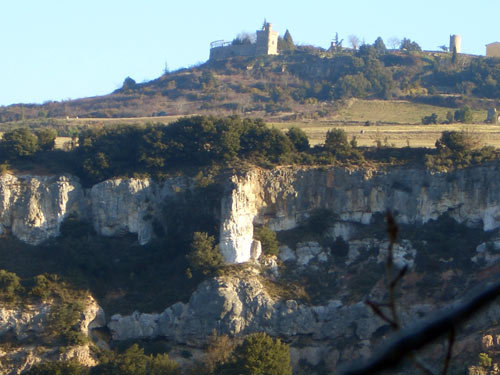Part of the legend of Rennes-le-Château is the negative, wicked and omnipresent energy that seems to permeate from this part of the Aude valley. Enthusiasts with more receptivity than I to these sorts of things tell me that the energy of the place is staggering. In fact, many are resolute that the energy is the true treasure! So just hold that thought…
For several years I worked with an esteemed UK Egyptologist, renowned for his lectures on revisionist chronologies, BBC specials and scholarly books. For sake of anonymity, I shall refer to him has Mr Egypt.
After a tour of the Grail Castles in Northern Spain we arrived in Rennes-le-Château, five of us in total, full of equal doses of sarcasm and intrigue. The visit to Rennes-le-Château started off well enough; Jean Luc greeted us and conducted his usual excellent, nothing but the facts tour. We had a lovely dinner in our funky chic, spa town hotel, the L’hostellerie de Rennes les Bains, and were just settling down in the hotel bar to debate the merits of the legend, when it all began to go horribly wrong.
Within minutes, Mr. Egypt and his long time colleague were exchanging words with the intensity of Asmodeous himself, as if possessed. Mr. Egypt’s colleague quickly parted company, and unbeknownst to the rest of the party, promptly booked his taxi for a pre-dawn return journey to the UK.
To my knowledge, Mr. Egypt and his close friend and colleague have never spoken again. And within 24 hours, the same could be said for Mr Egypt and myself.
The next day we returned to the village of Rennes-le-Château. Having seen the sights before, I decided to do something different. With uncharacteristic spontaneity, I decided to walk to the Grotto pointed to by the window in the Tour Magdela. Ever since Jean Luc had first pointed out this often ignored sensation (see Catch 22: The Grail And The Grotto) I had become increasingly obsessed to explore it.

The view of the Grotto from the lone window in the Tour Magdela
I asked the villagers for directions, doing the best I could with my shameful attempt at Languedoc French. They tried to persuade me not to go. They claimed nobody goes there; too arduous, too many cliffs, rivers and shrubbery to cross. But I didn’t listen. Well that’s not entirely true. They did insist that I take a compass reading before I ventured off, as the Grotto disappears from view the closer you get, or so they said. I did, and off I went.
The walk was hellish. I had to admit I felt pretty stupid; expensive camera gear swinging from my neck as I jumped off cliffs and tip toed through streams. I was not sure I could continue. Maybe I should take a picture from here, return now and cut my loses, and tell everyone how great it was, I kept thinking. The only problem was I could no longer see the grotto! It had inexplicably disappeared from view, just like the villagers said it would.
It was then I realized that what kept me going was the energy. I mean this really insane energy. I don’t think I could have turned back if I wanted to.

The Arduous walk to the Grotto
The Grotto was fascinating. I took some pictures and quickly headed back. Returning to town, it was evident that I had taken the energy with me. I now felt compelled to return to the Tour Magdela. I had a hunch. The compass reading I had taken before I set off was suspiciously close to a number of great significance to the story; 22.
Standing with my back to the Tour Magdela, facing the Grotto, I read my compass. What little colour I had left quickly dissipated. It read 22 degrees (south of west). What were the odds?
The Tower of the Magdalene (Tour Magdela) is reached by two sets of 11 steps (22). An anomalous floor tile points up a spiral stair case with 22 steps where a single window points unambiguously at a grotto whose ancient place name is ‘Grotte du Fournet – dite de la Magdeleine’, which translates as ‘The Burial Site of the Mary Magdalene‘, and which is offset from the window by 22 degrees.
22, of course, is the feast day of Mary Magdalene.
Mr. Egypt confirmed my compass reading, and agreed with my theory that Abbe Sauniere had simply commemorated his discovery by encoding the number 22 in his restorations, namely the Tour Magdela. Could that mean that Abbe Saunire actually discovered the remains of…. No, we couldn’t possibly say that, could we?

The patterned tile on the Tour Magdela floor

An anomalous tile points up the 22 steps and the lone window

The anomalous tile
Mr Egypt and I met up in London a week later. I had requested that he return my collection of Rennes-le-Château books. We have never spoken again.
